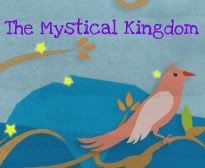
One perennial symbol of Easter is the Easter egg. The Phoenicians, Persians, Hindus, Egyptians, and Chinese believed that the world was created out of an enormous egg. In one Hindu myth from ancient India, this Egg of the World broke into two separate halves, each representing the underlying illusory duality or maya in all of Creation. A golden half symbolized the sky while a complementary silver half represented terra firma or earth’s soil and seas.
This eternal egg has come to symbolize fertility and procreation, or the birth and spawning of new Life itself. The Easter Bunny? Of course, rabbits are prodigiously fertile, and are often regarded as fertility symbols. Oestre was said to have been importuned by a giant bird that desired to be transformed into a rabbit, and when she complied, he gratefully laid eggs each spring as a ritual offering.
Eostre, the Anglo-Saxon goddess of springtime, was bringing spring to the land when she happened upon a girl who was weeping in the forest. For the girl did not know what to do. The girl had found a bird who had frozen to death in the snow. Taking pity on her, Eostre went to the girl to bring the bird back to life for she couldn't bare to see the girl feeling so sad but Eostre could not save the bird's wings so she turned the bird into a rabbit.
 Having once been a bird, the rabbit retained its ability to lay eggs and every Eosturmonath (Eostre month/April) the rabbit would lay eggs in all the bright colours of spring as a thankyou to the goddess Eostre for saving its life.
Having once been a bird, the rabbit retained its ability to lay eggs and every Eosturmonath (Eostre month/April) the rabbit would lay eggs in all the bright colours of spring as a thankyou to the goddess Eostre for saving its life.And that is the story of the 'easter bunny' and the tradition of why we decorate eggs in bright colours. Eostre was the goddess of springtime and fertility hence the further symbolism of rabbits (procreation), eggs (fertility) and chocolate (aphrodisiac).








What is your source for this? I was under the impression that there was no reference--at all--to Eostre before the Venerable Bede (in the 8th century), and that was just to mention that she gives her name to the month.
ReplyDeleteThis is very interesting. Thanks for sharing I have enjoyed looking around your blog. We are new to Waldorf and I'm excited to find new blogs to follow and learn from. Hope you'll come visit us at http://raisingourfamily.blogspot.com
ReplyDelete